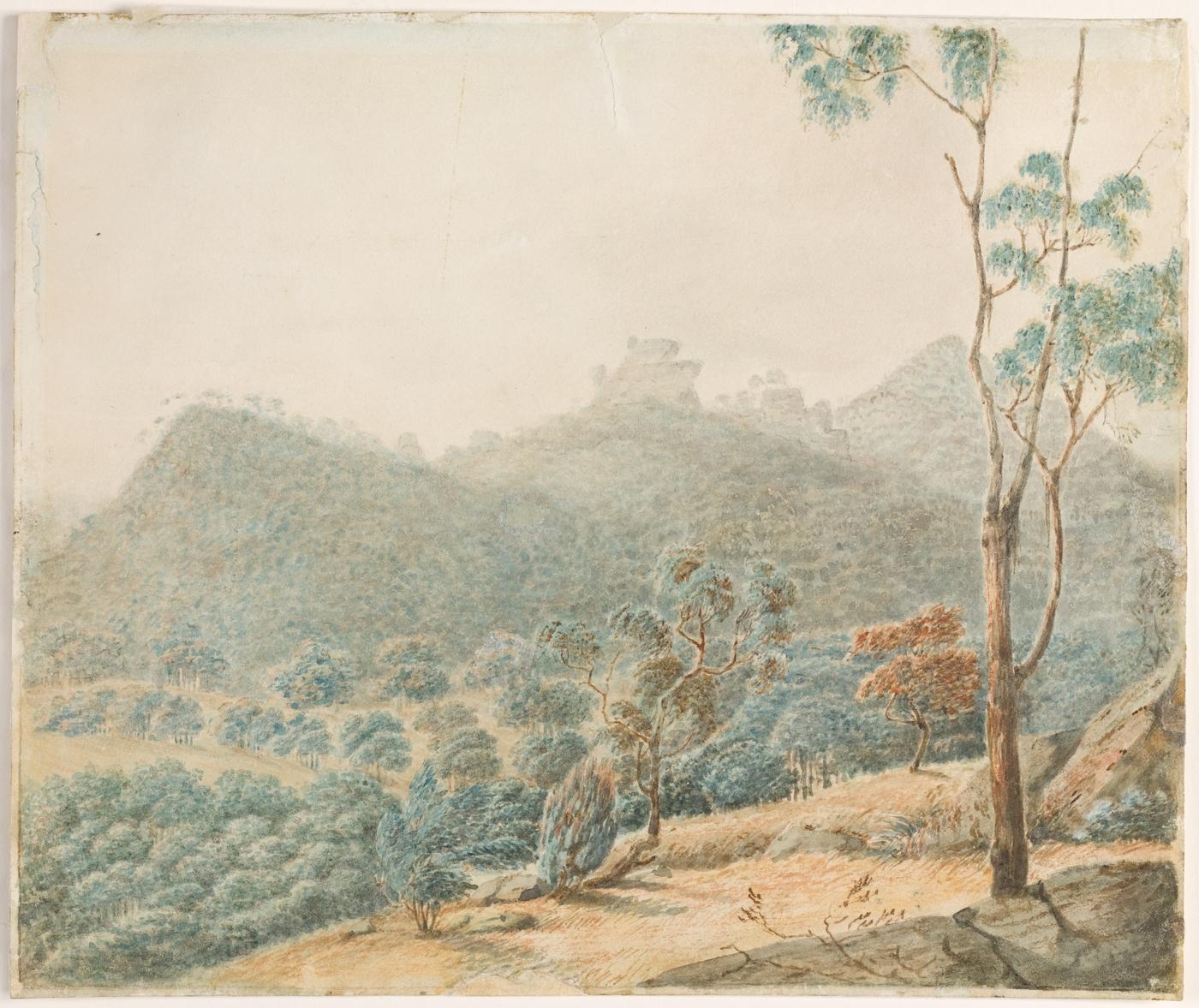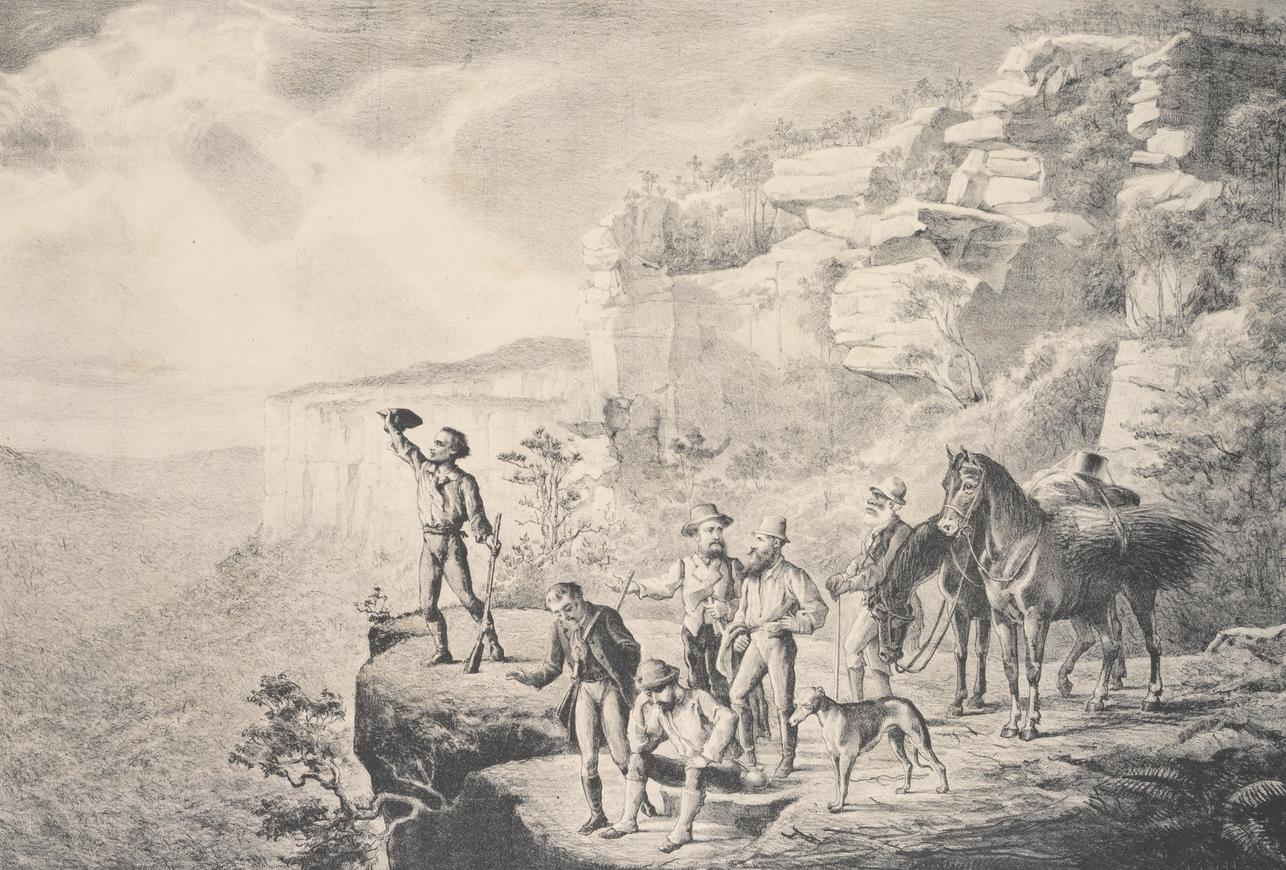Finding the way west
Finding the way west
In 1813, Gregory Blaxland (1778-1853) put together an expedition with a plan to find a passage to the western plains by following a line of ridges that ran westward between two river valleys. William Lawson (1774-1850) and William Charles Wentworth (1790-1872) joined him as well as a local guide, three convict servants, four pack horses and five dogs.
Blaxland (35), who had already made several attempts to cross the mountains to find new pastureland for his sheep after acquiring land near Eastwood, led the expedition after petitioning Governor Macquarie for permission to form an exploration party.
He invited experienced colonial officer and NSW Corps member William Lawson (39) to join him, not least because he had trained as a surveyor in England before he sailed to Sydney in 1799.
He also brought William Charles Wentworth (22) whose youth and adventurous spirit made him an obvious choice for the expedition. Locally-born but educated in England, the future barrister, author, and statesman was at that time Acting Provost Marshall. Having been granted 1750 acres on the Nepean River, his desire to join the expedition was a practical one, as he too wanted to obtain new grazing land.
“I have every reason to think that the same ridge of mountains we traveled on will lead some distance into the interior of the country.”
- William Lawson
Expedition documents
All three explorers kept journals, each offering a rich document of the expedition. Blaxland published his account in 1823. Wentworth wrote enthusiastically about the landscape, resources and future benefits to the colony. Perhaps most useful for those seeking to retrace the explorers' trail today was Lawson's journal, which recorded the precise progress of their path westwards.
After setting out from Blaxland's South Creek farm (near St Marys) on Tuesday 11 May, the explorers quickly fell into an organised routine, which could explain their success where others had failed.
Waiting until the dew had dried off the bush each morning they would leave two servants with the horses and supplies in camp. The men then navigated their way through the thick scrub for about four or five miles, marking the trees on either side of the trail, before turning back and cutting a path for the horses to follow the next day.
It was tedious, time consuming work. They often had to hack a path wide enough for the horses through thick bush, sometimes going over the same ground three times in order to make progress.
Impassible cliffs and steep gullies
The challenges they faced included the damp, often foggy and cold climate, the need to find or carry feed for the horses and sometimes having to descend steep gullies for water.
Their hopes that they had found an apparently promising way forward would often be dashed at the foot of impassable cliffs.
After taking 21 days to find a way through 50 miles of the most rugged terrain in the Blue Mountains, the party reached the heights of Mount Blaxland. From there they saw a vast expanse of forest and grass land stretching before them, rich enough to 'support the stock of the colony for the next thirty years.' (Blaxland, 1823)
Trailblazers
With supplies running low, their clothes and shoes in tatters and several of the men now ill, they ended their expedition and headed for home. Compared to the slog westwards, the return journey was easy and rapid, as they had only to follow their own clearly blazed trail.
Sydneysiders eagerly greeted the news of the explorers' success. Though the party had stopped short of crossing over the mountains, they had now blazed a trail that would show the way through. As Wentworth put it:
“Admitting that we have not traversed the Mountains, we have at all events proved that they are traversable and that too, by Cattle - a circumstance….(hitherto) deemed impossible.”
With the way to the west now open, plans were soon afoot to complete the crossing.


